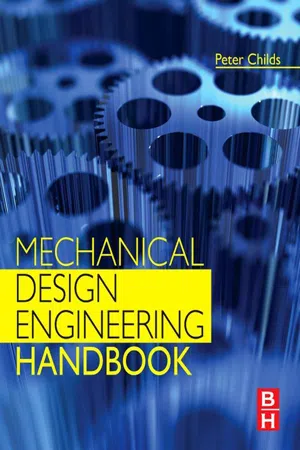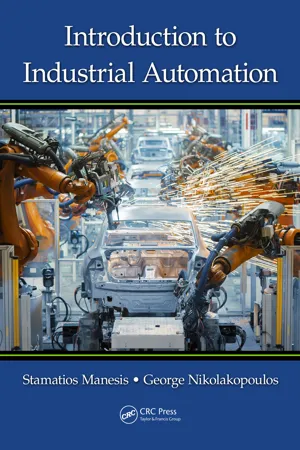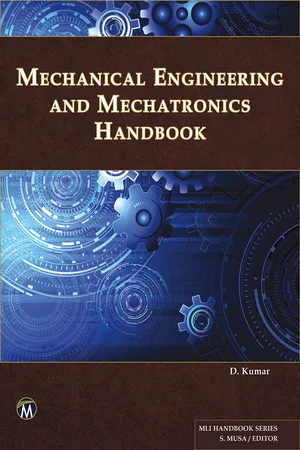Technology & Engineering
Pneumatic Pistons
Pneumatic pistons are devices that use compressed air to create mechanical motion. They are commonly used in industrial and manufacturing settings to power machinery and equipment. Pneumatic pistons are known for their reliability, efficiency, and ease of use.
Written by Perlego with AI-assistance
Related key terms
1 of 4
Related key terms
1 of 3
3 Key excerpts on "Pneumatic Pistons"
- eBook - ePub
- Peter Childs(Author)
- 2013(Publication Date)
- Butterworth-Heinemann(Publisher)
Chapter 18Pneumatics and Hydraulics
Abstract
Pneumatics and hydraulics represent well-developed technologies where components are available from a wide range of suppliers in modular form, enabling the engineering design to specify a bespoke system for a particular application. Pneumatics and hydraulics are useful for the actuation of diverse elements from brakes and valves to robotics and machine tools. This chapter introduces both technologies and the associated principal components.Chapter OutlineKeywords
Actuators; Advantage; Compressor; Control; Filters; Force; Hydraulics; Mechanical; Pneumatics; Pressure; Receiver; Valves18.1 Introduction 18.2 Pressure 18.2.1 Pressure Measurement 18.2.2 Fluid Flow Measurement 18.2.3 Temperature Measurement 18.3 Hydraulic Pumps 18.4 Air Compressors and Receivers 18.5 Filters 18.6 Control Valves 18.7 Pneumatic and Hydraulic Actuators 18.8 Conclusions References Further Reading Nomenclature18.1 Introduction
A wide range of industrial applications require substances, objects, or components to be moved from one location to another. A further typical requirement is the application of a force to locate, hold, shape, or compress a component or material. These tasks can be achieved using a prime mover, with rotary motion being provided, for example by an electric motor and linear motion by screw jacks, rack and pinions, and solenoids. Liquids and gases can also be used to convey energy from one location to another and as a result produce rotary and linear motions and apply forces. Fluid based systems using a liquid as the transmission media are known as hydraulic, and those using a gas are known as pneumatic.The gases used in pneumatic systems tend to be low density and compressible, in comparison with the relatively high density and incompressible liquids used in hydraulic systems. As a result, pneumatic systems can be characterized as having a “softer” action in comparison with hydraulic systems, while hydraulic systems can generally be operated at much higher pressures, producing higher forces. Equivalent pneumatic and hydraulic systems for lifting a load are illustrated in Figure 18.1 - eBook - ePub
- Stamatios Manesis, George Nikolakopoulos(Authors)
- 2018(Publication Date)
- CRC Press(Publisher)
5 Elements of Electro-Pneumatic Components5.1 Introduction to Electro-Pneumatic ComponentsThe term “pneumatic automations” usually refers to the automation systems that base their operation on the utilization of pressurized air. Pressurized air, even if it is a carrier of low energy, has a number of significant properties that make its utilization extremely popular in multiple industrial applications. For the use of pressurized air in industrial automation, the most commonly operated devices are pressurized air flow regulators, widely known as pneumatic valves and pneumatic actuators, which are devices that transform the energy of pressurized air in motion. In cases where the energizing of air flow valves is performed by the utilization of electrical solenoids, these pneumatic systems are called electro-pneumatic automations.The general area of pneumatic automations is very extensive, and thus the aim of this chapter is to cover the case of electro-pneumatic automations in detail, with the main emphasis on the final automation circuit.5.2 Pressurized AirAir has been utilized as a means of movement creation since ancient times, as can be seen from numerous related literature on devices and machines that were operating by utilizing pressurized air. It should also be highlighted that the English term “pneumatics” originates from the Greek word “πνεύμα”, which meant “breathing” or “light blowing”, and today means “spirit”. Subsequently, the physical properties of air are considered well known a priori from classical physics courses, and thus no depth of analysis will be provided here.Although it had not been utilized to a large extent in the past, pressurized air was adopted by industrial automations rather late in the 1960s. The real utilization of pneumatics in industry happened after the creation of the need to automate the largest portion of industrial operations. The rapid growth in this field that followed, as well as the establishment of pneumatic automations, was mainly due to the fact that there is a specific category of industrial automation problems that can only be solved efficiently and at low cost, by the utilization of different means, if not pressurized air. Nowadays, there is no industrial automated production that is not utilizing pneumatic automations with pressurized air. Pressurized air has some significant advantages, such as: - eBook - ePub
- D. Kumar, Sarhan M. Susa(Authors)
- 2022(Publication Date)
- Mercury Learning and Information(Publisher)
A and overcomes the spring force. When the supply of compressed air is stopped and the air inside the chamber is allowed to escape to the atmosphere, the piston travels toward the right.FIGURE 10.89 Double-acting pneumatic actuatorThe double-acting pneumatic arrangement has two ports (valves) for compressed air supply and its subsequent release to the atmosphere. When pressurized air enters chamber A , there is an escape of air from chamber B , and the piston is pushed extreme on the left side of the cylinder. During the next stroke, the entry of pressurized air is chamber B , the escape of air to the atmosphere is from chamber A , and the piston movement is toward the right.The single and double-acting linear pneumatic actuators have key advantages of:● compact design and reliable operation,● rugged construction and suitable for harsh environments,● easy maintenance, and● positioning accuracy and versatility of use and application.These actuators have wide applications in industries where the load needs to be lifted or lowered, pushed or pulled, and positioned. The main industries using linear actuators are:− material handling and packaging,− food processing and pharmaceutical, and− machine tool, automotive, and defence.The rotary actuators have been designed and developed for the applications requiring a rotary motion or torque to control the speed and rotation of the attached equipment. In these actuators:● there is transformation of pneumatic, hydraulic or electric energy to mechanical rotation, and● the linear motion in one direction gives rise to a turning or angular movement through a pre-set (defined) angle.The pneumatic rotary actuators utilize the pressure of compressed air to generate the oscillatory rotary motion. For operation, the force is applied at a distance away from the axis of rotation and that causes a turning moment. The two most common configurations of pneumatic rotary actuators are:
Index pages curate the most relevant extracts from our library of academic textbooks. They’ve been created using an in-house natural language model (NLM), each adding context and meaning to key research topics.
Explore more topic indexes
Explore more topic indexes
1 of 6
Explore more topic indexes
1 of 4


